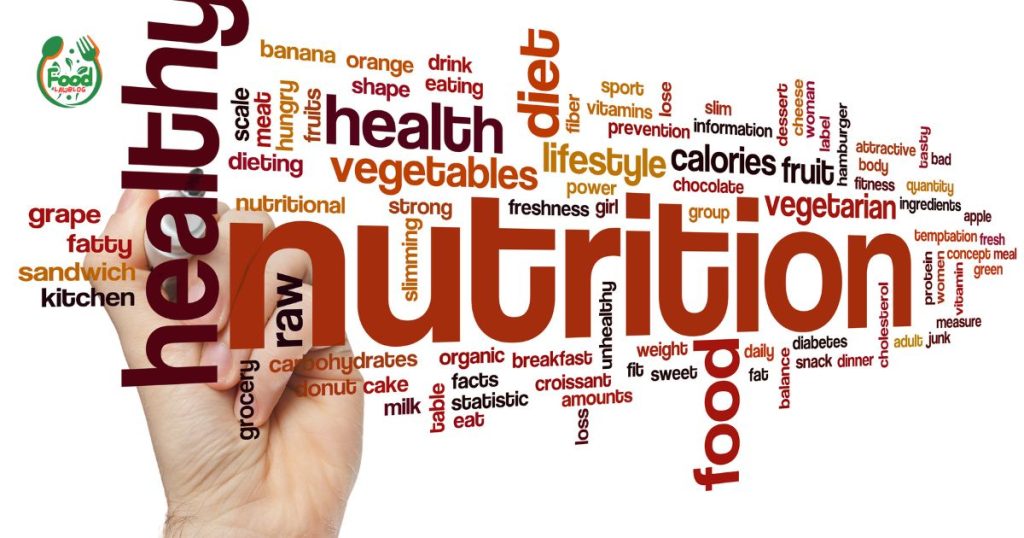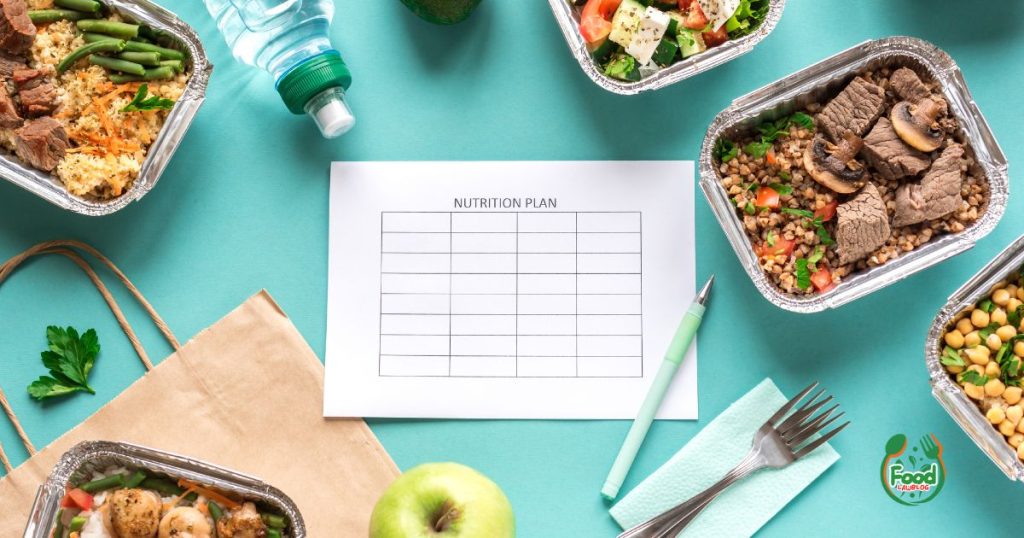Introduction
Fast Food Nutrition Counter: Explore the top 2026 trends in fast food nutrition tech. Learn how AI, GLP-1 menus, and carbon labels are shaping the future of quick-service dining. The humble fast food counter is undergoing a seismic transformation. What was once a simple point of transaction is evolving into an intelligent, data-driven nexus of health, personalization, and transparency. As we look toward 2026, the convergence of shifting consumer values and powerful new technologies is setting the stage for a revolution in how quick-service restaurants (QSRs) communicate nutritional information. This is no longer just about posting calorie counts; it’s about creating a dynamic, interactive, and deeply personal customer experience.

The industry is moving beyond basic compliance to proactive engagement. Drivers for this change are multifaceted: a post-pandemic surge in health consciousness, the rise of GLP-1 agonists reshaping dietary norms, and a growing demand for corporate responsibility, particularly in terms of sustainability. In response, forward-thinking brands are leveraging artificial intelligence, advanced sensors, and integrated digital ecosystems to deliver unparalleled clarity and choice. This article examines the definitive Smart Fast Food Nutrition Counter Trends 2026, providing a roadmap for QSR and fast-casual leaders to navigate this evolving landscape. We will discuss the technology, menu innovations, and strategic imperatives that will define success in the years to come.
Key Takeaways
- Hyper-Personalization is the Standard: AI-driven menu recommendations, tailored to individual dietary needs, health goals, and even wearable data, will move from novelty to expectation.
- Transparency Extends Beyond Calories: Consumers will demand comprehensive data, including micronutrient details, allergen alerts, sustainability metrics like carbon labeling, and supply chain provenance.
- The Rise of Wellness-Aligned Menus: The influence of GLP-1 medications will drive demand for high-protein, low-glycemic, and fiber-rich options, forcing menu recalibration.
- Technology is the Backbone: The modern nutrition counter relies on a sophisticated tech stack, including computer vision kiosks, RFID packaging, digital twins for operations, and robust API integrations.
- Data Governance is Paramount: Handling sensitive health and wellness data requires a stringent focus on privacy, security, and compliance with regulations such as GDPR and CCPA, extending to HIPAA-adjacent wellness information.
- ROI is Tied to Trust and Loyalty: The value of these systems is measured not just in operational efficiency but in enhanced customer trust, brand loyalty, and the ability to attract and retain health-conscious consumers.
The Consumer Shift: From Convenience to Conscious Consumption
The foundation of the smart nutrition counter is a fundamental change in consumer behavior. Price and speed, while still important, are no longer the only dominant factors in fast food selection. A new, more discerning customer has emerged, armed with information and driven by personal values.
The New Health Imperative
Post-pandemic awareness has cemented health and wellness as a primary consideration. This goes far beyond simple calorie counting. Consumers are now more informed about a range of nutritional concepts, from macronutrient balancing to the effects of ultra-processed foods. They are actively seeking meals that support their specific health goals, whether that’s building muscle, managing weight, or managing a chronic condition.
The cultural and medical impact of GLP-1 agonists powerfully amplifies this trend. As millions of people adopt these medications, their dietary needs and preferences are undergoing significant changes. They require smaller portions, higher protein content, and foods with a low glycemic index to manage side effects and maximize health benefits. QSRs that offer clear, accessible GLP-1-friendly meals will capture a rapidly growing and highly motivated market segment.
The Demand for Radical Transparency
Today’s consumer expects honesty and clarity from the brands they support. This “radical transparency” extends deep into a company’s operations and supply chain.
- Nutritional Labeling 2.0: Basic calorie, fat, and sodium disclosures are now table stakes. By 2026, leading brands will provide detailed micronutrient tracking (including vitamins and minerals) and clear information on added sugars.
- Allergen Disclosure: Dynamic, real-time allergen alerts at the point of sale are becoming a legal and ethical necessity. Cross-contamination warnings, once relegated to fine print, will be integrated directly into the ordering process.
- Sustainability Metrics: The conversation is expanding from personal health to planetary health. Carbon labeling, which displays the carbon footprint of a menu item, is a key emerging trend. Consumers, especially younger generations, are increasingly making purchasing decisions based on a brand’s environmental impact. This includes information on water usage, regenerative agriculture practices, and responsible sourcing. [Authority Source: World Health Organization (WHO) dietary guidelines]
The Technology Stack of the 2026 Nutrition Counter
To meet these complex consumer demands, restaurants are investing in a sophisticated ecosystem of hardware, software, and data analytics. This technology is the engine powering the smart nutrition counter.
Hardware Innovations at the Point of Sale
The physical interface of the restaurant is becoming smarter and more interactive.
- Computer Vision Kiosks: Self-service kiosks are being upgraded with cameras and AI that can identify customers (with consent), retrieve past orders, and even estimate demographic information to suggest relevant menu items.
- Dynamic Digital Menu Boards: Static menus are being replaced by digital screens that can change based on time of day, inventory levels, and even the customer standing in front of them. These boards can highlight low-calorie options, promote new plant-forward items, or display real-time sustainability data.
- RFID and Smart Packaging: RFID packaging enables unparalleled accuracy in tracking an item from the production line to the consumer. This technology can confirm the correct order, verify ingredients for allergen safety, and provide a digital link for consumers to scan and access detailed information on supply chain traceability.
Software and Data: The Brains of the Operation
Behind the gleaming screens is a powerful software layer that personalizes the customer journey and streamlines operations.
- AI-Driven Menu Personalization: This is the core of the smart counter. AI algorithms analyze a customer’s order history, stated dietary preferences, and integrate wearable device data, such as that from an Apple Watch or a Fitbit. The system can then generate personalized meal recommendations that align with the user’s daily calorie budget, macro targets, or allergen avoidance needs.
- Predictive Ordering and Inventory: By analyzing sales data and external factors such as weather or local events, AI can accurately predict demand for specific items. This enables more efficient real-time inventory management, thereby reducing food waste—a key sustainability metric.
- Nutrition APIs and Interoperability: A successful ecosystem relies on seamless data flow. Nutrition APIs enable a brand’s mobile app, kiosks, and website to access a single, centralized source of truth for all nutritional and ingredient data. Crucially, this includes interoperability with Apple Health and Google Fit, allowing customers to log their meals and track their health goals automatically.
The Role of Edge Computing and 5G
Processing vast amounts of data in real time—especially video from computer vision systems or requests from dozens of simultaneous users—requires immense computing power. Edge computing moves this processing closer to the source (i.e., within the restaurant itself), reducing latency and ensuring a snappy, responsive user experience. The rollout of 5G provides the high-bandwidth, low-latency network needed to connect these systems reliably, from drive-thru AI to ghost kitchen order terminals.

Menu Innovation for the Health-Conscious Consumer
Technology is only an enabler. The true test of a brand’s commitment is reflected in its menu. By 2026, QSR menus are expected to look significantly different, with a greater emphasis on dietary inclusivity and functional foods.
Designing for Dietary Needs and Preferences
Menu engineering will evolve to cater to a broader range of lifestyles and medical needs.
- The GLP-1 Friendly Menu: This will become a dedicated category, featuring high-protein, high-fiber, and lower-fat options in appropriate portion sizes. Think grilled chicken bowls with quinoa, protein-fortified smoothies, and egg bite platters.
- Plant-Forward and Vegan Dominance: Plant-based is no longer a niche. It’s a core category. Beyond burgers, this includes innovative uses of vegetables, legumes, and whole grains. Vegan and plant-forward options will be clearly labeled and integrated throughout the menu, rather than relegated to a separate section.
- Allergen-Safe Offerings: Brands will go beyond simple disclosure to create dedicated menu items free from the top nine allergens. This may involve separate prep areas in the kitchen, verified through third-party audits, to build trust with customers who have severe allergies.
- Dietary Inclusivity: Certifications, such as Halal and Kosher, will be prominently displayed on digital menus, making it easier for customers to adhere to their religious dietary requirements.
From Ultra-Processed to Whole Foods
A growing backlash is emerging against ultra-processed foods. While the nature of fast food makes this challenging, leading brands will find ways to incorporate more whole or minimally processed ingredients. This can be a powerful marketing tool, showcasing a commitment to quality and excellence. Farm-to-table verification, powered by blockchain provenance, enables customers to scan a QR code on their salad box and see exactly which farm the lettuce originated from. For brands looking to build trust, this level of transparency is the future. (QSRs can link to their sustainability or sourcing pages here.)
Health, Wellness, and Clinical Integrations
The most advanced smart fast food nutrition counter trends for 2026 involve blurring the lines between the restaurant, the wellness industry, and even the clinical space.
Connecting with Wearables and Health Apps
The ability for customers to connect their personal health profiles is a game-changer. By granting permission, a customer’s kiosk or mobile app profile can sync with their health data.
- Wearable Integrations: A customer who just finished a workout might be automatically presented with high-protein recovery meal options. Someone tracking their sodium intake via their health app could see warnings on high-sodium items.
- Macro and Micronutrient Tracking: For serious athletes or those with specific medical needs, the ability to see how a potential meal fits into their daily macro tracking goals is invaluable. The system could display a progress bar for protein, carbs, and fat, updated in real-time as they build their order.
Partnerships with Dietitians and Clinical Professionals
To add a layer of credibility, QSRs will increasingly partner with registered dietitians and clinical partnerships. These professionals can help design and validate menu items, contribute to a brand’s health-focused content, and even be available for digital consultations through the brand’s app. This transforms the QSR from a simple food provider into a trusted partner in a customer’s wellness journey. (This is a good place to link to a brand’s menu nutrition information page.)
The Regulatory and Compliance Landscape
With great data comes great responsibility. The collection and use of personal health information (PHI) and personally identifiable information (PII) is a legal and ethical minefield that brands must navigate with extreme care.
Data Privacy and Governance
Customer trust is fragile. A single data breach can destroy a brand’s reputation. A robust privacy and data governance framework is not optional.
- GDPR/CCPA Compliance: These regulations set a high bar for data handling, requiring explicit consent for data collection, clear terms of use, and the ability for users to delete their data. All nutrition personalization programs must be built with a “privacy-by-design” approach.
- HIPAA-Adjacent Wellness Data: Although a restaurant is not a healthcare provider, the moment it begins handling wearable device integrations and detailed health goal information, it enters a gray area of HIPAA-adjacent wellness data. Consumers consider this information just as sensitive as their medical records. Security protocols must be equally stringent, utilizing end-to-end encryption and secure data storage.
- Biometric Logins: Using facial recognition or fingerprints for kiosk logins offers convenience but also introduces significant privacy risks. Brands must provide alternative login methods and be transparent about how biometric data is stored and protected.

Mandatory Disclosure and ESG Reporting
Governmental and investor pressure for transparency is increasing. Federal regulations, such as the FDA’s menu labeling rules, are just the beginning. [Authority Source: FDA Menu Labeling Requirements]. We expect to see future mandates around allergen disclosures and even standardized carbon labeling. Furthermore, investors are increasingly evaluating companies based on ESG (Environmental, Social, and Governance) reporting. A brand’s ability to track and report on metrics like food waste, supply chain ethics, and carbon footprint will directly impact its valuation and access to capital.
Operations, ROI, and Building a Business Case
Implementing a smart nutrition counter ecosystem is a significant investment. Leadership will rightly expect a return on that investment. The ROI can be measured in both hard and soft metrics.
Operational Efficiency
- Reduced Labor Costs: Smart kiosks and drive-thru AI can handle a significant portion of the ordering process, freeing up employees to focus on food preparation, quality control, and customer service. This is a critical advantage in a tight labor market. (A brand could link to its careers page here.)
- Increased Throughput: Personalized, predictive ordering streamlines the decision-making process for customers, leading to shorter lines and faster service times, especially during peak hours.
- Waste Reduction: AI-powered inventory management minimizes spoilage, resulting in direct cost savings and a smaller environmental footprint. Digital twins, virtual models of the kitchen, can simulate workflow to identify bottlenecks and optimize layouts for maximum efficiency.
Marketing, Loyalty, and Customer Lifetime Value
The true value of these systems lies in building deeper customer relationships.
- Enhanced Loyalty Programs: Personalization is the key to modern loyalty. Instead of generic “buy 10 get one free” offers, a smart system can offer a customer a discount on their favorite high-protein bowl or provide a free drink that pairs well with their usual order.
- Gamification and Nudging: Brands can use gamification to encourage healthier choices, offering loyalty points or badges for trying a new salad or hitting a weekly vegetable goal. This application of behavioral economics, or nudging, can gently guide customers toward better options without being restrictive.
- Attracting High-Value Customers: Consumers who are health-conscious, tech-savvy, and focused on sustainability are often willing to pay a premium for products that align with their values. Investing in a smart nutrition platform is an investment in attracting and retaining this valuable demographic.
Accessibility and Equity: Nutrition for All
A critical consideration in the rollout of these technologies is ensuring they do not create a two-tiered system. Dietary inclusivity must be matched by digital and economic inclusivity.
- Multilingual Support and Accessibility: Digital interfaces must be designed to be accessible to everyone. This means offering multilingual support and adhering to web accessibility standards for customers who are visually or hearing-impaired. Voice assistants can provide a hands-free ordering option for those who need it.
- Bridging the Digital Divide: Not every customer has a smartphone or is comfortable with a digital kiosk. Restaurants must maintain traditional ordering options with well-trained staff who can answer nutritional questions.
- Affordability and Food Deserts: Smart nutrition counters have the potential to bring detailed health information to underserved communities, including food deserts. However, brands must ensure that healthier options remain affordable and accessible. Technology should not be used as a justification to price healthier food out of reach for lower-income consumers.

Risks and Ethical Considerations
The path to 2026 is not without its challenges. Brands must be mindful of the potential pitfalls.
- The “Creep Factor”: Hyper-personalization can be powerful, but it can also feel invasive if not handled correctly. Customers must always be in control of their data and have the ability to opt out easily.
- Algorithmic Bias: AI models are trained on data, and if that data is biased, the model’s recommendations will also be biased. An algorithm might inadvertently steer certain demographic groups away from certain foods, reinforcing stereotypes. Regular audits of the AI are essential.
- Data Security: As mentioned, a breach involving health-related data could be catastrophic for a brand, leading to massive fines and a permanent loss of customer trust.
The Future Outlook: 2026 and Beyond
The Smart Fast Food Nutrition Counter Trends 2026 represent a fundamental rewiring of the relationship between quick-service brands and their customers. This is not a fleeting fad; it is the new standard of competition. The brands that thrive will be those that embrace transparency, leverage technology thoughtfully, and place the customer’s well-being at the center of their strategy.
Looking beyond 2026, we can anticipate even deeper integrations. Imagine a world where your smart fridge adds milk to your grocery list and your restaurant app suggests a balanced meal for dinner because it knows you’re running low. Consider ghost kitchens that are fully automated, with robotic systems preparing personalized meals based on digital orders, verified by a blockchain ledger for ingredient provenance. This is the direction the industry is heading.
The journey begins now. The investments in data infrastructure, AI talent, and ethical frameworks made today will determine the leaders of tomorrow. The smart nutrition counter is more than a tool; it is a statement of a brand’s values and its vision for the future of food.
For quick-service and fast-casual brands, the message is clear. The time to act is now. Begin by auditing your current technology stack and nutritional communication strategy. How does it measure up to the future we’ve outlined? Your customers are becoming increasingly informed about their food choices. Your counter needs to be smarter, too. (Link to a brand’s app download page would be a suitable CTA here).
Frequently Asked Questions (FAQ)
1. What is the most significant 2026 nutrition counter trend for fast food chains?
The most significant trend is the shift to AI-driven hyper-personalization. This involves using customer data (with consent) from order history, loyalty programs, and even wearable health devices to provide real-time, personalized meal recommendations that align with individual health goals, dietary restrictions, and taste preferences.
2. How will the rise of GLP-1 drugs like Ozempic affect fast food menus by 2026?
GLP-1 drugs are creating a massive demand for meals that are high in protein, rich in fiber, and lower in fats and simple carbohydrates, served in smaller portions. By 2026, leading QSRs will feature dedicated “GLP-1 Friendly” menu categories, making it easy for this growing consumer base to find suitable, satisfying options.
3. What is carbon labeling, and will it be common in fast food by 2026?
Carbon labeling displays the estimated carbon footprint of a menu item, much like a nutrition label displays calories. It communicates the environmental impact of food choices. While still emerging, consumer and investor pressure for ESG transparency will make carbon labeling an increasingly common feature on digital menu boards and apps by 2026, especially among brands targeting younger demographics.
4. How can AI improve allergen management in restaurants?
AI can dramatically improve allergen safety. When a customer flags an allergy in their digital profile, the AI system can automatically filter out unsafe menu items, suggest safe alternatives, and even send a special alert to the kitchen staff’s prep screen. This moves beyond passive warnings to active prevention.
5. What are the biggest privacy concerns with smart nutrition counters?
The biggest concerns involve the collection and security of sensitive health data, such as dietary restrictions, calorie targets, and information synced from health apps. Brands must ensure robust data encryption, transparent privacy policies compliant with the GDPR/CCPA, and provide users with full control over their data to build and maintain trust.
6. Can smaller restaurant chains or single-location businesses adopt these advanced technologies?
Yes. While large enterprises may build custom systems, the rise of “as-a-service” (SaaS) models will make this technology more accessible to a broader audience. Smaller chains will be able to subscribe to third-party software for AI personalization, digital menu management, and nutrition API services, allowing them to compete without a massive upfront investment.
7. How can a QSR measure the ROI of investing in a smart nutrition tech stack?
ROI can be measured through a mix of metrics:
- Hard ROI: Increased average check size from upselling/cross-selling, higher order throughput, reduced food waste, and lower labor costs from kiosk/AI ordering.
- Soft ROI: Increased customer loyalty and frequency (measured via the loyalty program), higher customer satisfaction scores, and brand lift from being perceived as a modern, health-conscious leader.
8. What is a “digital twin” in a restaurant context?
A digital twin is a virtual replica of a restaurant’s physical operations, including the kitchen layout, equipment, and staff workflows. By running simulations on the digital twin, managers can test new menu items, optimize prep station layouts, or predict bottlenecks during a rush, all without disrupting the real-world restaurant. This improves efficiency and throughput.
<script type="application/ld+json">
{
"@context": "https://schema.org",
"@type": "BlogPosting",
"mainEntityOfPage": {
"@type": "WebPage",
"@id": "https://foodlawblog.com/"
},
"headline": "Ultimate Fast Food Nutrition Counter Trends 2026",
"description": "Fast Food Nutrition Counter: Explore the top 2026 trends in fast food nutrition tech. Learn how AI, GLP-1 menus, and carbon labels are shaping the future of quick-service dining. The humble fast food counter is undergoing a seismic transformation. What was once a simple point of transaction is evolving into an intelligent, data-driven nexus of health, personalization, and transparency. As we look toward 2026, the convergence of shifting consumer values and powerful new technologies is setting the stage for a revolution in how quick-service restaurants (QSRs) communicate nutritional information. This is no longer just about posting calorie counts; it’s about creating a dynamic, interactive, and deeply personal customer experience.",
"image": "https://foodlawblog.com/wp-content/uploads/2025/11/fast-food-nutrition-counter-4.jpg",
"author": {
"@type": "Person",
"name": "Habibur Rahman",
"url": "https://foodlawblog.com/about-us/"
},
"publisher": {
"@type": "Organization",
"name": "Habibur Rahman",
"logo": {
"@type": "ImageObject",
"url": "https://foodlawblog.com/wp-content/uploads/2025/11/cropped-cropped-latest-1.png"
}
},
"datePublished": "2025-11-09",
"dateModified": "2025-11-09"
}
</script>

